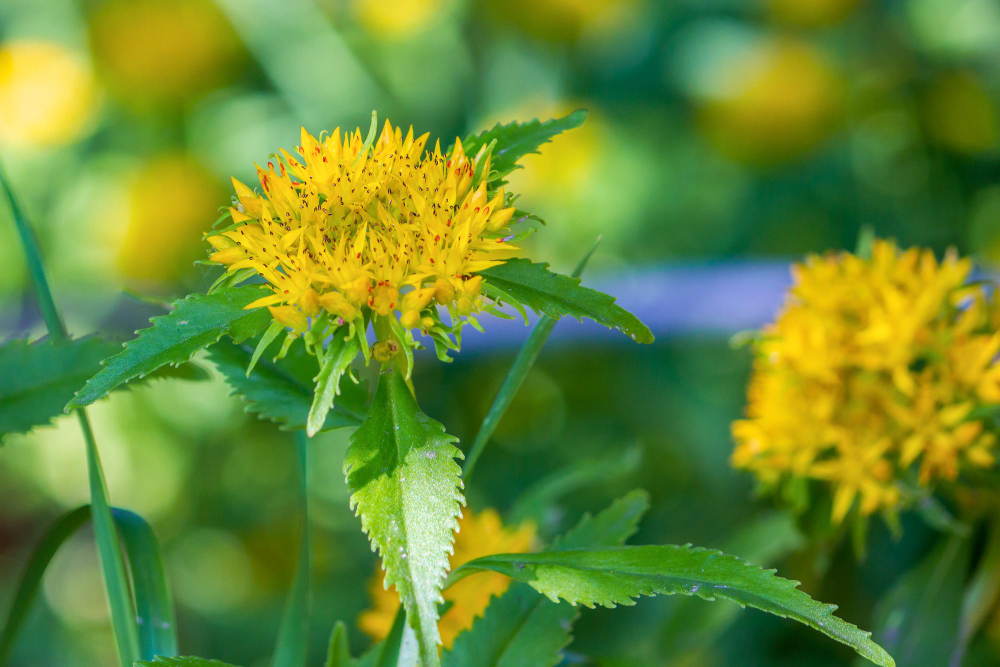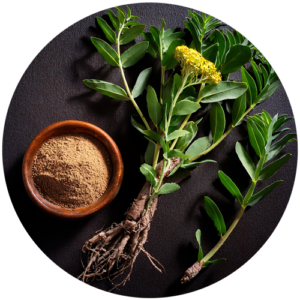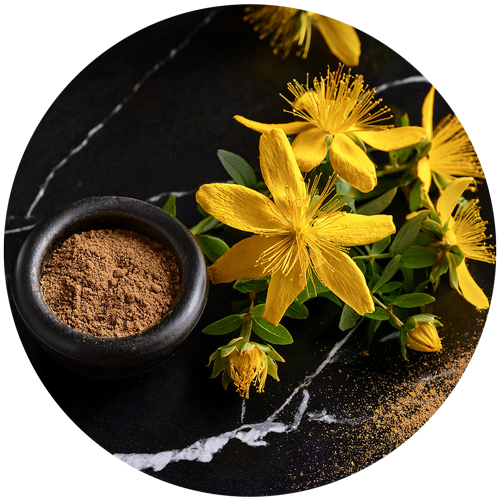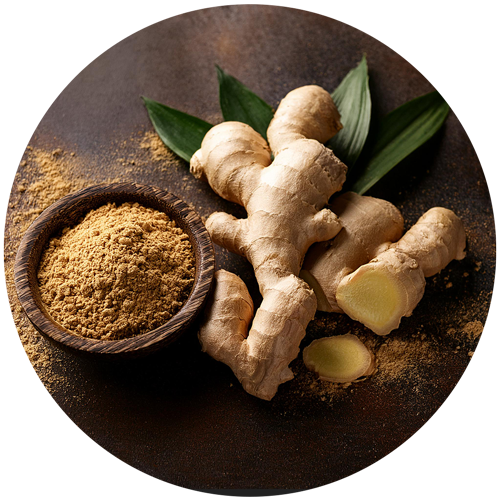

RHODIOLA
 Toning
Toning  Nervous system
Nervous system  Sports performance
Sports performance  Cognitive function
Cognitive function  Circulation
Circulation  Antioxidant
Antioxidant  Anti-stress
Anti-stress Rhodiola rosea, also known as rose root or golden root, belongs to the Crassulaceae family and is a plant traditionally used in Europe to increase stamina and work performance, and to relieve fatigue, weakness, impotence and other nervous system disorders, thanks to its active ingredients, notably rhodiolosides and rosavin. Rhodiola root is the main adaptogen to have been granted a “stress” indication by the European Medicines Agency. It boosts the body’s resistance to stress, exhaustion and fatigue. Read the detailed description
Our references
Regulations
and analysis
Identification: HPLC Dosage: HPLC
Data on traditional use
EMA monograph:
-
Used for temporary relief of stress symptoms such as fatigue and feelings of weakness.
Canadian monograph :
-
Used as an adaptogen to provide temporary relief from stress symptoms such as mental fatigue and feelings of weakness, and to help maintain cognitive function.
Association ideas by health axis
Select one or more axes:

Detailed description
Rhodiola rosea, also known as rose root or golden root, belongs to the Crassulaceae family and grows mainly in the Himalayan belt, Tibet, China and Mongolia, but is also cultivated in Europe and North America. It is traditionally used in Europe to boost stamina and work performance, and to relieve fatigue, weakness, impotence and other nervous system disorders. In fact, Rhodiola root extract is an adaptogen that acts to increase the body’s resistance to stress, exhaustion and fatigue. It is the main adaptogen to have been granted a “stress” indication by the European Medicines Agency. At least 140 compounds have been identified in Rhodiola root extract that may have health benefits, particularly for the nervous system. These include non-polar monoterpene hydrocarbons, geraniol, monoterpenes, cyanogenic glycosides, phenylpropanoids, flavonoids, flavonolignans and other gallic acid derivatives. Rhodiola’s adaptogenic and anti-stress properties have also been associated with rhodioloside and rosavins, which are powerful inhibitors of the enzymes responsible for the degradation of dopamine in the brain, notably monoamine oxidase A, as well as controlling the secretion of cortisol, the stress hormone, and the production of ATP in the brain.












